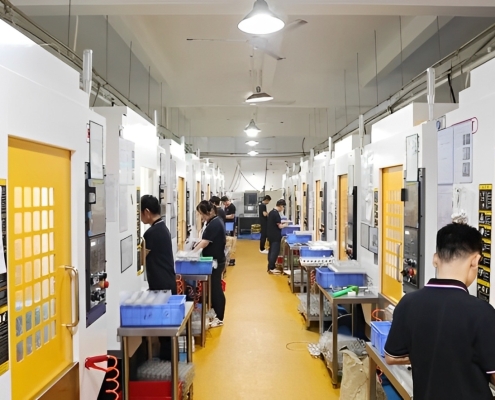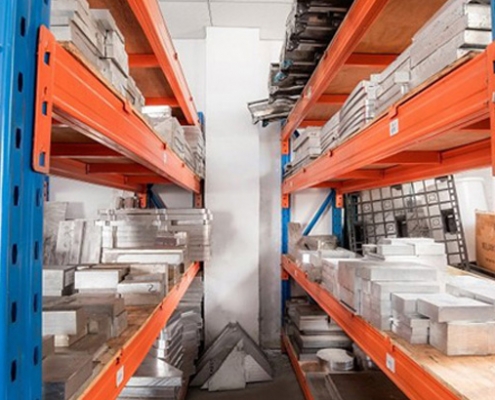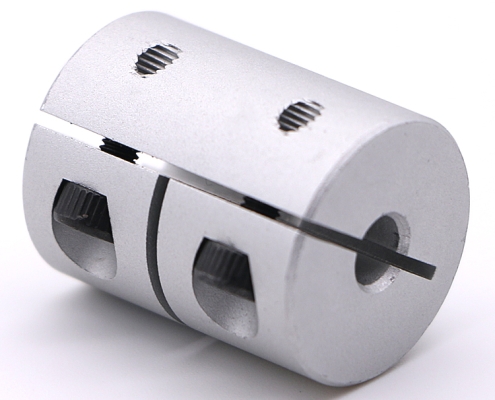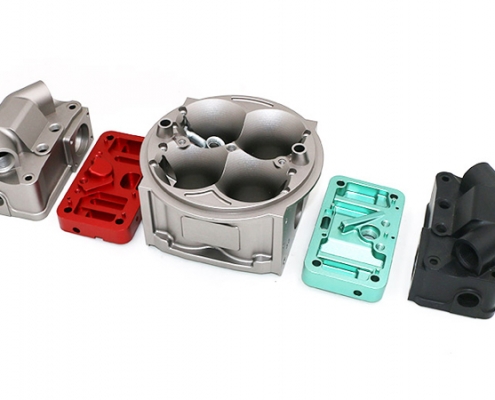CNC Machining: Revolutionizing Manufacturing
Outdated manufacturing wastes time and money. Inaccurate parts lead to loss. CNC machining solves this with fast, precise, and cost-efficient production.
CNC machining revolutionizes manufacturing by offering high precision, repeatability, and speed. Using high-end machining software for precision and precision CNC machines, it delivers consistent quality for industries like automotive, aerospace, and electronics.
Let’s explore how CNC machining reshapes the future of manufacturing with unmatched speed, precision, and industrial innovation.
What Is CNC Machining and How Does It Work?
CNC machining is a subtractive manufacturing method where machines are operated by precisely programmed computer instructions. These instructions are derived from CAD models and converted into G-code, guiding the machine’s movements.
Using precision CNC milling machines or turning machines, CNC technology shapes metals and plastics into exact forms. This process eliminates human error, ensures consistency, and significantly speeds up the production cycle.
The Evolution of CNC Technology
From manual control to fully automated systems, CNC machining has undergone revolutionary changes. Traditional lathes have transformed into high-end CNC milling machines for precision manufacturing that support multi-axis movement and real-time feedback systems.
Software advancements now allow for simulation, optimization, and full integration with digital twins, enabling smarter production workflows.
Why CNC Machining Is a Game-Changer in Manufacturing?
CNC machining revolutionizes the manufacturing process by enabling scalability and efficiency. With its ability to handle both high-mix, low-volume production and large-scale manufacturing, it allows companies to adapt quickly to varying production demands. Whether it’s for prototyping or mass production, CNC machines can be easily programmed and reprogrammed, reducing setup times and minimizing costs for small production runs.
Additionally, CNC machining helps manufacturers significantly reduce waste by maximizing material usage. With advanced cutting strategies, these machines precisely remove material.
What Types of CNC Machines Are Commonly Used?
Common types include 3-axis, 4-axis, and 5-axis milling machines, CNC lathes, and hybrid multitasking machines. Each machine type serves specific roles in shaping parts with different complexity.
| Machine Type | Capabilities | Application Fields |
|---|---|---|
| 3-Axis Mill | Basic contouring and pocketing | General parts, tooling |
| 5-Axis Mill | Complex multi-surface precision machining | Aerospace, optics, robotics |
| CNC Lathe | High-speed symmetrical part production | Automotive shafts, bushings |
| CNC Router | Cutting and carving large sheets | Furniture, sign-making, packaging |
| CNC Plasma Cutter | Precision cutting of metals using plasma | Metal fabrication, art, signage |
| CNC Laser Cutter | High-precision cutting and engraving | Jewelry, electronics, prototyping |
| Swiss-Style Lathe | Fine machining of small, complex parts | Medical devices, watchmaking |
What Materials Can Be Used in CNC Machining?
CNC machining supports a wide variety of materials, including metals like aluminum, stainless steel, brass, titanium, and copper, as well as plastics such as ABS, POM, and PTFE. Metals are valued for their strength, corrosion resistance, and conductivity, making them suitable for aerospace, automotive, and industrial applications. Plastics and composites, like carbon fiber, offer lightweight and wear-resistant options for gears, enclosures, and aerospace components.
Exotic materials like Inconel and Hastelloy are used in high-performance applications due to their heat and corrosion resistance. This broad material compatibility allows CNC machining to serve industries ranging from medical to aerospace with precision and reliability.
Advantages of Precision CNC Machining
Precision CNC machining offers numerous advantages that make it a preferred manufacturing method across various industries. Its ability to produce high-quality, accurate parts.
| Advantage | Description |
|---|---|
| Ultra-Tight Tolerances | Achieves exceptional accuracy, ensuring parts meet exact design specifications. |
| Support for Complex Geometries | Multi-axis systems enable machining of intricate and detailed shapes. |
| High Speed and Consistent Performance | Delivers rapid production with uniform quality and minimal human error. |
| Reliable Output | Precision machining with in-process verification ensures consistent results. |
| Material Versatility | Supports a wide range of materials, including metals, plastics, and composites. |
| Cost-Effective for High Volumes | Reduces per-unit cost for large production runs due to automation efficiency. |
| Repeatability | Ensures consistent part production over multiple batches without deviation. |
| Reduced Waste | Maximizes material utilization, minimizing scrap and waste in the process. |
| Scalability | Easily adapts to both small prototype runs and large-scale manufacturing. |
CNC vs. 3D Printing: Which Is Better for Production?
3D printing is best for design flexibility and rapid prototyping, enabling complex geometries and quick iterations. However, it has limitations in material strength, surface finish, and production speed for large volumes.
CNC machining excels in producing functional parts with tight tolerances, superior accuracy, and high-quality finishes. It supports a wide range of materials, making it ideal for industrial, aerospace, and medical applications, particularly for high-strength and large-scale production needs.
What Is the Role of Surface Treatment in CNC Machining?
Surface treatments in CNC machining play a crucial role in enhancing both the performance and appearance of machined parts. These processes improve corrosion resistance, wear resistance, and aesthetic appeal, making them essential for industries such as automotive, aerospace, and consumer electronics.
-
Anodizing: Common for aluminum parts, it increases surface hardness, adds corrosion resistance, and offers options for vibrant colors.
-
Powder Coating: Provides a durable, high-quality finish with excellent resistance to wear and corrosion, suitable for parts exposed to harsh environments.
-
Sandblasting: Used to clean, smooth, or texture the surface, creating a uniform matte finish.
-
Polishing: Enhances the surface’s shine and smoothness, often used for decorative or high-precision applications.
Applications of CNC Machining
CNC machining is widely used across various industries for both prototyping and large-scale production of precision components. Here are some key applications:
-
Aerospace: CNC machining plays a crucial role in producing turbine blades, structural supports, and engine components. These parts require high precision and material strength to meet the rigorous demands of the aerospace industry.
-
Automotive: In the automotive sector, CNC is used to manufacture gearboxes, drive shafts, brake components, and engine parts. The need for accuracy and durability in high-performance conditions makes CNC machining essential for producing reliable and high-quality automotive components.
-
Electronics: CNC machining is used for enclosures, heatsinks, and circuit board housings. The technology allows for the production of complex shapes and fine details required for electronics that need both functional and aesthetic considerations.
-
Medical: In the medical field, CNC machining produces highly precise components such as bone screws, surgical jigs, implantable devices, and prosthetics. These parts must adhere to strict tolerances and be made from biocompatible materials, making CNC machining ideal for ensuring safety and performance in medical applications.
Start Your CNC Machining Project at VMT
We have 100+ machines, including high precision CNC milling machines, VMT delivers custom parts in as fast as within 3 days. Our engineers provide free design support to optimize manufacturing efficiency and visual appeal.
More Resources: CNC Machining vs Manual Machining: Principles and Differences
Frequently Asked Questions
Why Should Polishing Be Done From Coarse To Fine?
The process of polishing from coarse to fine is based on the scientific principles of material surface treatment. First of all, coarse polishing can quickly remove large impurities and significant uneven areas on the material surface, laying a good foundation for subsequent fine polishing. As the polishing grain size is gradually refined, the surface roughness is continuously reduced until the desired mirror or high-gloss effect is achieved. This process not only improves the aesthetics of the product but also enhances its durability and functionality.
What Process Does Polishing Belong To?
Polishing is a type of surface treatment process and is widely used in CNC machining, milling, turning and other mechanical processing fields. It uses mechanical, chemical or electrochemical effects to modify the surface of the workpiece through polishing tools, abrasive grains or other polishing media to reduce surface roughness and make it smooth and bright. Polishing technology is used in the processing of various materials such as metal, wood, glass and plastic, and is an important means to improve product quality and added value.
Theifference Between Brushing And Polishing.
In CNC machining services, drawing and polishing are two common surface treatment processes. They each have their own characteristics and are suitable for different processing needs.
- Wire drawing process: Wire drawing is a metal processing process that uses external force to force the metal through a mold, thereby forming specific textures or lines on the metal surface. This process can give the metal surface a unique visual effect and feel, while increasing the wear resistance of the surface. The brushing process is not afraid of minor scratches, because the scratches tend to blend with the original texture and do not affect the overall beauty.
- Polishing process: In contrast, the polishing process pays more attention to the smoothness and gloss of the surface. It achieves a mirror or high-gloss effect on the surface of the workpiece by gradually refining the polishing grain size and increasing the polishing time. The polished surface has high flatness and strong reflective ability, which can significantly improve the aesthetics and texture of the product. However, polished surfaces are relatively fragile and susceptible to scratches and damage.







